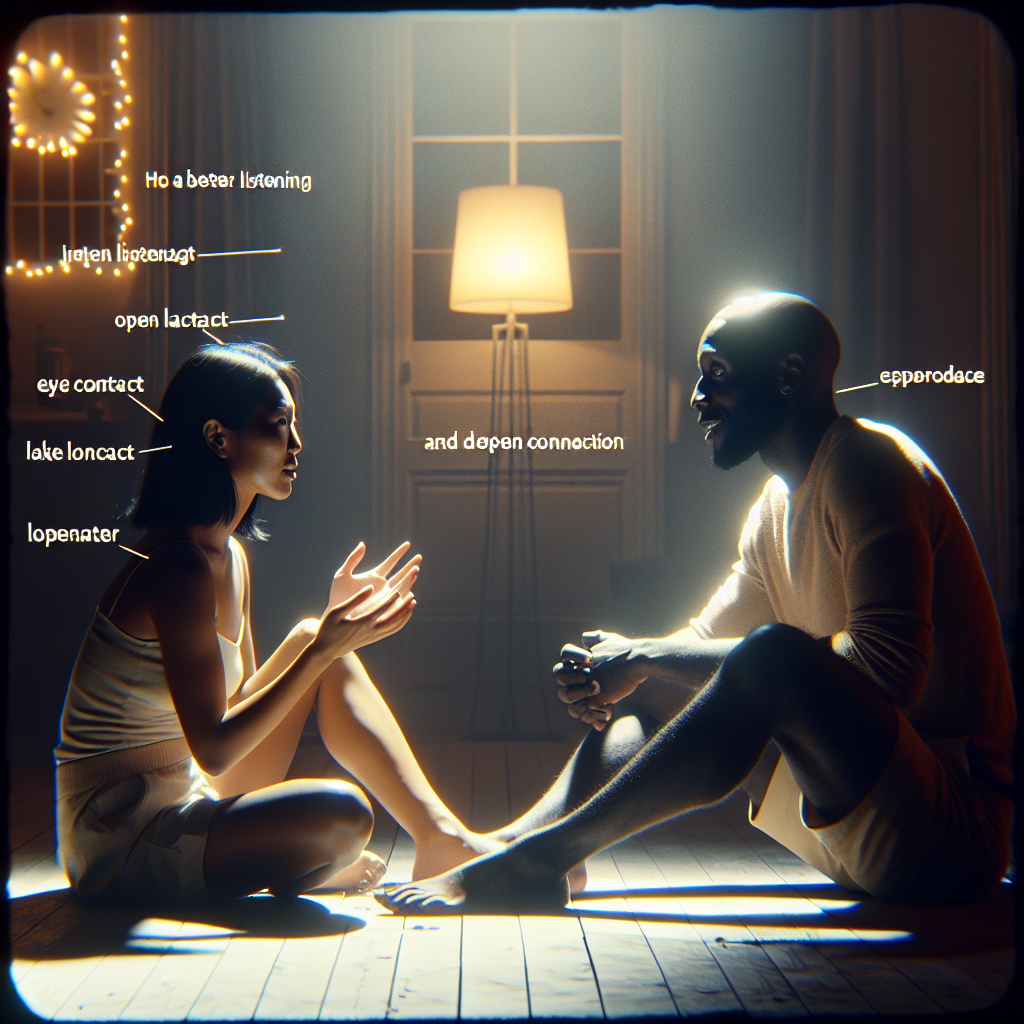How to be a better listener and deepen connection
Be Fully Present
Put Away Distractions
One of the best pieces of advice I ever got was to really be present when someone is talking to me. I mean, no phones, no side conversations with other people nearby, nothing. When I made a conscious effort to put away distractions, I found that I could focus much better on the speaker. It’s like flipping a switch from background noise to front and center.
It really helps the person you’re speaking with feel valued, you know? They can sense when you’re not half-listening while scrolling through your phone. So, I started closing my laptop, turning off my phone notifications, and just giving them my undivided attention. You can see it in their eyes: they light up when they know you care.
It’s amazing how such a little change can transform conversations. I’ve noticed that I remember the details better too when I’m focused. Listening becomes more meaningful; it’s not just about hearing words but understanding them. That’s where true connections begin!
Practice Active Listening
Use Reflective Feedback
Active listening is a game-changer. So, what does that mean exactly? It’s more than just nodding along. I’ve found that using reflective feedback helps not only clarify messages but also shows the speaker that I’m really engaged. I might say things like, “So what I’m hearing is…” or “It sounds like you’re feeling…”
This technique has transformed how I communicate with friends and colleagues. It encourages them to elaborate and share more of their thoughts and feelings, which helps deepen our connection. They appreciate it when I take the time to make sure I understand them correctly, and it opens up a richer dialogue.
Becoming a better listener through this method has allowed me to grasp nuances in conversations that I used to miss. It creates this vibe of trust, making it easier for people to express themselves freely without the fear of being misunderstood. All of this boosts our connection to a whole new level!
Show Empathy
Validate Feelings and Experiences
Empathy is such a powerful tool in deepening connections. When I started to genuinely validate the feelings and experiences of others, it changed everything. Instead of jumping into problem-solving mode right away, I learned to just sit with their emotions for a moment. A simple, “Wow, that sounds really tough,” goes a long way.
People need to know their feelings are acknowledged. This helps them feel safe and heard. I’ve seen friends and even casual acquaintances open up more deeply when they know I’m there to support their feelings without judgment. It builds a stronger bond between us because they feel trusted to reveal their vulnerabilities.
When I express empathy, I also reflect on my feelings and experiences to relate. This doesn’t mean shifting the focus to myself but rather sharing a similar experience that shows I understand where they’re coming from. It layers our conversation with depth and humanity, creating an authentic connection that can last a lifetime.
Ask Open-Ended Questions
Encourage Deeper Dialogue
One tip I’ve picked up over the years is to ask open-ended questions. Instead of asking yes or no questions, I try to dive deeper. Phrases like, “What was that like for you?” or “How did you feel about that?” spark longer and more meaningful conversations. It’s wild how such little tweaks can change the flow of dialogue!
This approach encourages others to express themselves more freely. I’ve noticed that my friends seem relieved when I ask questions that invite them to reflect. It shows I care and I’m interested in what they have to say. Who wouldn’t love that feeling? It leads to discovering insights and perspectives that might otherwise go unshared.
As I became more skilled in this area, I realized it not only helps build connection but also broadens my horizons. I get to learn from the unique experiences of others, enriching my life in the process. Plus, deeper conversations often lead to a stronger friendship. It’s a win-win, for sure!
Observe Non-Verbal Cues
Read the Room
I can’t stress enough how crucial non-verbal communication is. When I started paying attention to body language, facial expressions, and tone, my listening skills skyrocketed. You don’t just hear what someone says; you feel it through their non-verbal cues, which often speak louder than words.
If someone’s crossing their arms or looking away, it could mean they’re uncomfortable or disengaged. I’ve found that acknowledging these cues helps guide the conversation. I might say, “I noticed you seemed a bit uneasy talking about that. Is everything okay?” This invites openness and can change the whole dynamic of the conversation.
Being aware of non-verbal signals also helps me respond appropriately. If someone is excited, my enthusiasm can mirror theirs, leading to a vibrant and engaging conversation. It’s like conversing on a whole other level, and it definitely strengthens connections. Remember, to really listen, you gotta look beyond just words!
Frequently Asked Questions
What is active listening?
Active listening is about genuinely engaging in a conversation, fully focusing on the speaker, and responding thoughtfully. It means not just hearing their words but also understanding and validating their feelings.
How can I improve my empathy skills?
Improving empathy involves practice! Start by really putting yourself in someone else’s shoes. Acknowledge their feelings without judgment, and reflect back what you’re hearing to show that you understand.
What are some examples of open-ended questions?
Examples include “What was your favorite part of that experience?” or “How did that situation affect you?” These questions encourage the speaker to share more and engage in deeper conversation.
Why are non-verbal cues important?
Non-verbal cues can convey emotions and attitudes that words may not express. Being attentive to these signals allows you to understand the speaker better and respond in ways that affirm their feelings.
How does being a better listener improve my relationships?
Being a better listener builds trust and connection in relationships. It shows that you value and respect the other person, making them more likely to open up and share their thoughts and feelings with you.










